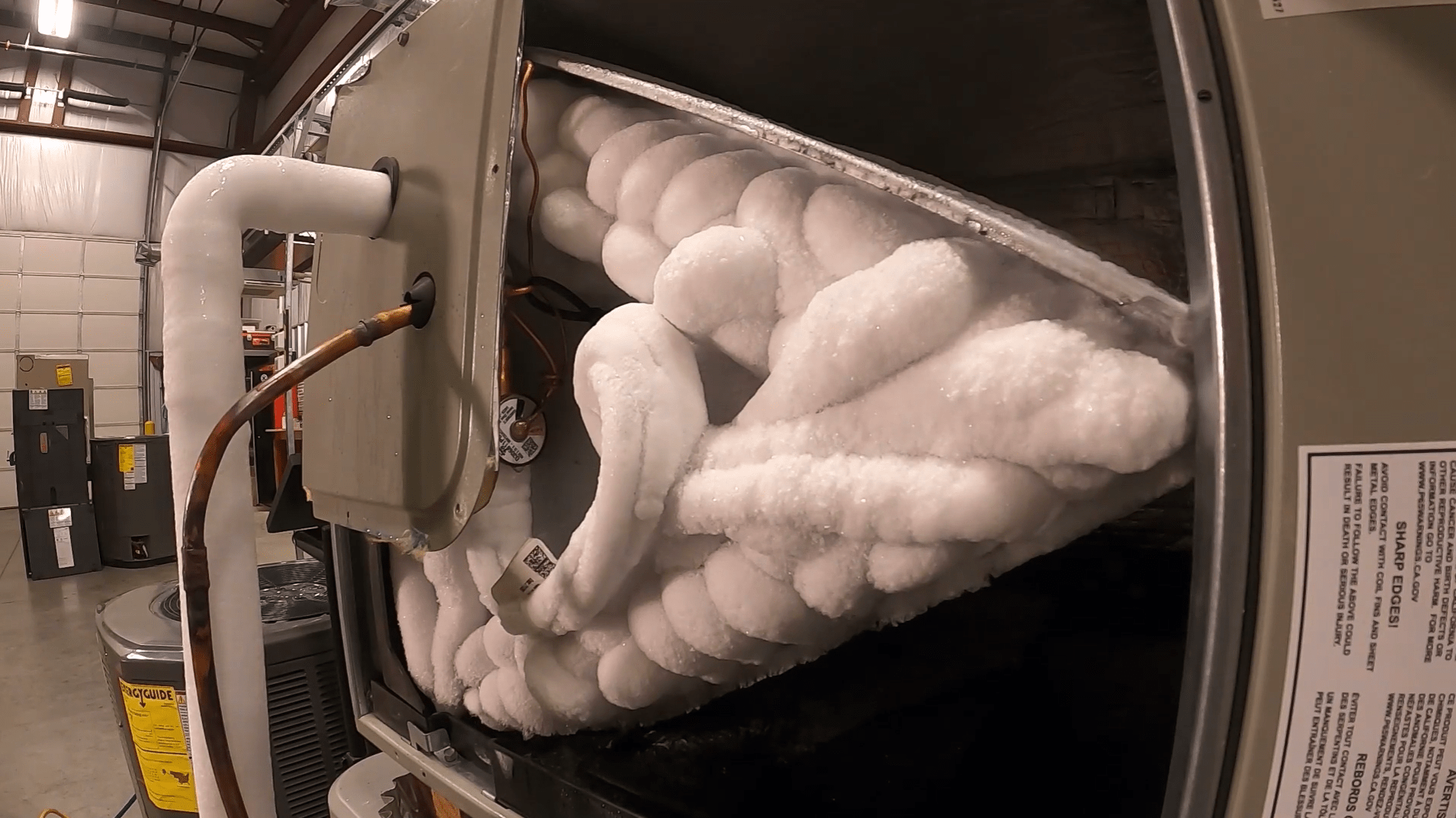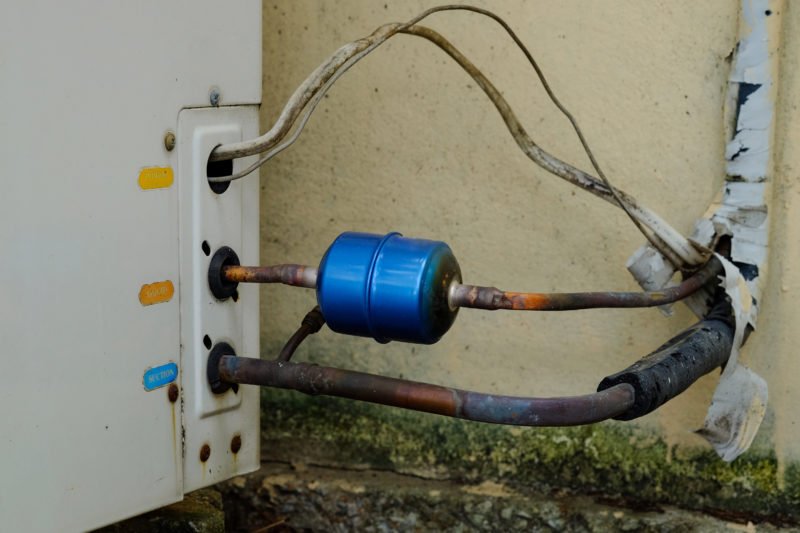What to Handle a Frozen AC Pipe - Essential Steps for Restoration
What to Handle a Frozen AC Pipe - Essential Steps for Restoration
Blog Article
We have stumbled upon the article pertaining to Air Conditioner Frozen? How To Fix your Frozen AC Line directly below on the internet and decided it made perfect sense to discuss it with you here.

Introduction
Discovering that your AC pipe is iced up can be worrying, particularly during hot summer season when you depend on your ac unit one of the most. Comprehending what to do in such a scenario is essential to stop additional damage to your cooling system and ensure your convenience indoors.
Understanding the Causes
Several variables can contribute to the freezing of an air conditioner pipe. Comprehending these causes can aid you deal with the issue successfully.
Lack of Airflow
One usual reason for an icy air conditioner pipe is inadequate air movement. When the airflow over the evaporator coil is limited, it can cause the coil to go down below freezing temperature, causing ice development on the pipe.
Reduced Refrigerant Levels
Insufficient cooling agent degrees in your air conditioning system can also result in a frozen pipeline. Reduced cooling agent levels can trigger the stress in the system to drop, causing the freezing of wetness on the evaporator coil.
Winter Conditions
In chillier environments, freezing temperatures outside can contribute to the cold of AC pipes. If your air conditioning system is not appropriately insulated or if there are leakages in the ductwork, chilly air can penetrate the system, creating the pipe to ice up.
Dirty Air Filters
Filthy or stopped up air filters can limit air movement in your air conditioner system, leading to numerous issues, including an icy pipeline. It's essential to change or clean your air filters routinely to make certain correct air flow and stop ice buildup.
Signs of a Frozen Air Conditioner Pipe
Recognizing the indicators of a frozen AC pipe is important for timely activity.
Lowered Airflow
If you notice a considerable reduction in air flow from your vents, it might show an icy pipeline.
Ice Buildup on the Pipe
Noticeable ice build-up on the refrigerant line or the evaporator coil is a clear indication of a frozen air conditioning pipe.
Unusual Sounds from the Unit
Unusual noises, such as hissing or bubbling, coming from your AC unit can signal that there's ice present on the pipeline.
Immediate Actions to Take
When faced with a frozen AC pipeline, it's important to act promptly to avoid additional damages to your cooling system.
Turning off the AC
The first step is to switch off your ac unit to avoid the system from running and intensifying the issue.
Looking for Blockages
Evaluate the location around the indoor unit for any blockages that may be blocking airflow, such as furnishings or curtains.
Thawing the Pipe
You can use gentle approaches like positioning towels soaked in warm water around the frozen pipe to aid thaw it slowly.
Preventive Measures
Taking safety nets can assist prevent future occurrences of a frozen AC pipeline.
Normal Maintenance Checks
Arrange regular upkeep checks with a specialist HVAC service technician to guarantee that your air conditioner system is running effectively.
Altering Air Filters
Regularly change or cleanse your air filters to avoid airflow limitations and maintain optimum performance.
Protecting Exposed Pipes
If your AC pipelines are subjected to cool temperature levels, consider shielding them to avoid freezing throughout winter season.
Seeking Professional Help
If DIY techniques fall short to deal with the issue or if you're not sure about exactly how to proceed, it's ideal to seek aid from a qualified HVAC specialist.
When DIY Methods Fail
If your efforts to thaw the pipe or address various other issues are not successful, it's time to hire an expert.
Importance of Hiring a Professional HVAC Technician
A qualified HVAC specialist has the expertise and tools essential to identify and repair concerns with your air conditioning system securely and successfully.
Verdict
Dealing with a frozen air conditioner pipe can be a discouraging experience, yet knowing exactly how to react can assist decrease damages and bring back convenience to your home. By understanding the reasons, recognizing the signs, and taking punctual activity, you can successfully resolve the issue and stop future incidents.
G UP? HOW TO FIX IT?
It happens all over America. And the rest of the world probably. It’s the hottest day ever and for some darn reason your AC isn’t cooling the house. You fiddle with the thermostat to try and fix the problem. Nada. All you can do now is go outside and check the AC unit. You make your way there and find your air conditioner unit is frozen! But how?
In this post we’ll cover how you can tell that your air conditioner has frozen (other than the obvious reasons), what could have caused the freeze, and some of the things you can do about your AC freezing up. And if you have a frozen heat pump condenser, read our blog about it to learn what to do! But remember, it is always best to avoid your AC freezing up with an AC tune up. And if you are moving into a home, it's critical to get HVAC inspection so that you are aware of an AC problems before you move in.
Keep reading and you may be able to fix the frozen AC yourself. If you can’t, call an HVAC specialist. If you live in Maryland, call SuperTech HVAC for AC repair. We’ll take care of it.
How Does An Air Conditioning Unit Work?
How you probably imagine an AC works is wrong. Contrary to popular belief, an AC system does not inject cool air into a building. Instead, it removes the heat from inside and transfers it outside. Cool huh? (Pun intended).There are 4 major components among the 3 stations of an air conditioning system: the evaporator coil, the compressor, the condenser, and the refrigerant – a special chemical that links everything together through a closed loop system.
Station 1:
Warm indoor air is sucked into the return vent, through a filter, and blows over the evaporator coil. The heat is absorbed into the cold refrigerant, turning it from liquid to gas. The air, which is now cool, is blown back into the home to areas that your thermostat, i.e. you, has decided.
Station 2:
The refrigerant makes its way outside the house to the compressor, which squeezes the warm refrigerant, raising its gaseous temperature even more.
Station 3:
When the super hot vapor refrigerant reaches the condenser, the last step, the heat is expelled and absorbed into the outdoor air. The refrigerant instantly cools, which changes it from gas back to liquid form. The cold liquid refrigerant is now ready to return to station 1 and repeat the process.
Is Your AC Freezing Up? Here Are The Signs:
As you may have guessed, your air conditioner unit freezing up on a hot day is not normal.
If this happens, there's no need to panic. Often the issue can be solved with a little troubleshooting. If the AC unit is left frozen for too long however, you may find yourself with a bigger problem.
First things first, how do you know your AC is frozen?
Well, the obvious sign is the ice on your refrigerant line-set pipe. Simply check between your outdoor AC unit and your home's exterior wall to see whether your AC line frozen.
You might also have a frozen evaporator coil. This one's not as easy to check. You'll need to open a panel on the indoor unit to inspect. Don't do this unless you're handy. If you aren't, call an HVAC pro like SuperTech HVAC or you may damage something in the process.

I hope you enjoyed our excerpt on What Causes AC Pipes To Freeze?. Thanks for spending some time to read our piece of content. Be sure to take a moment to distribute this blog posting if you enjoyed reading it. Thank you so much for your time spent reading it.
Book-Now Report this page